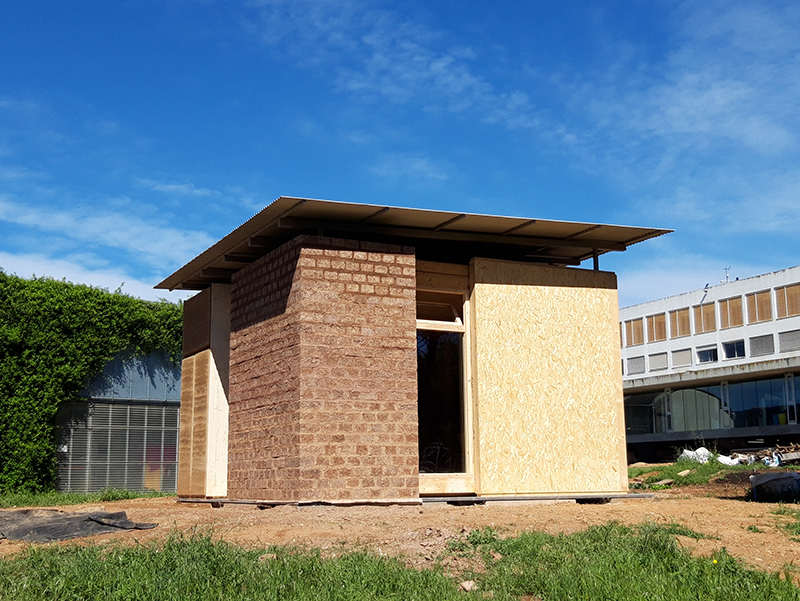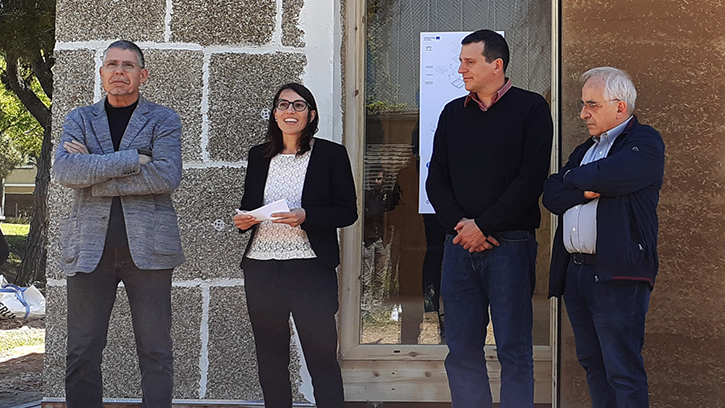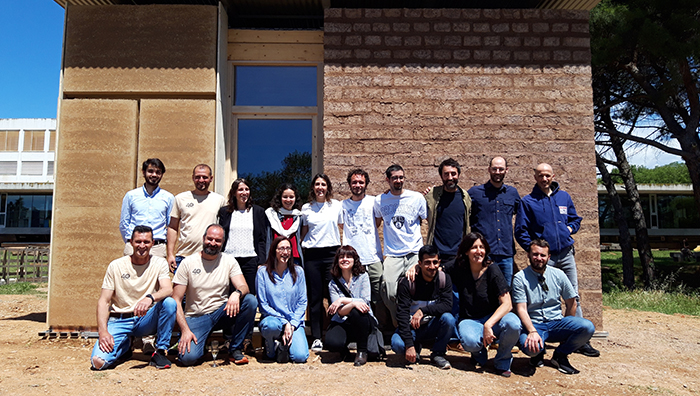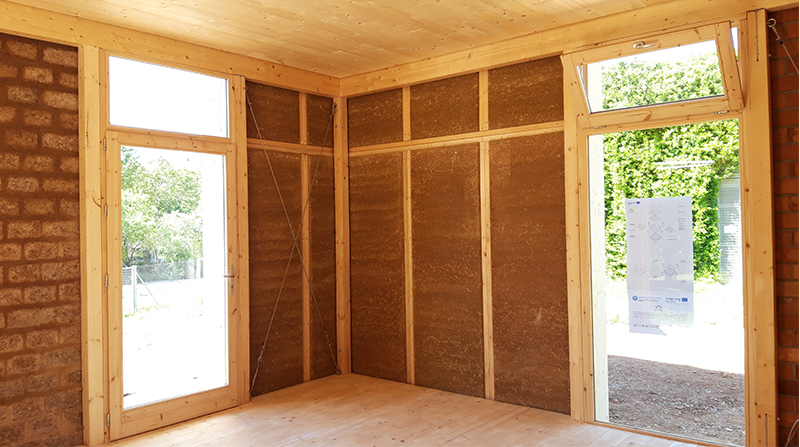
Is it possible to put up a building with corn and sunflower stover? Construction is today one of the most polluting industries, largely due to the materials used. Insulating materials, for example, are mainly derived from raw materials of mineral or petroleum origin. Extracting and processing them has a significant environmental impact, especially with regard to greenhouse gas emissions and energy consumption.
Certain agricultural wastes, such as corn and sunflower stalks, have physical characteristics that can give building materials very satisfactory performance in terms of thermal insulation and water drainage, plus they are eco-friendly. They are bio-based raw materials with many environmental benefits: they are renewable and local, and act as carbon sinks.
Developing these bio-based materials to minimise the environmental impact of construction and building a network of professionals driving innovation in the application of these by-products as building materials are the main aims of the project StructurAtion of a cross-border Value chAin for corn and Sunflower stems of COnstructions (SAVASCO).

It is a cross-border project led by the Université Toulouse III Paul Sabatier (France), with the participation of the Universitat Politècnica de Catalunya · BarcelonaTech (UPC), the Universitat Rovira i Virgili, the Institut National Polytechnique de Toulouse, the Catalan Federation of Agricultural Cooperatives (FCAC), the Coopérative d’Artisans Éco-Constructeurs Terre de Bois, the architecture cooperative Arqbag, the associated work cooperative COECO and other partners in the construction industry.
A group of researchers from the Interdisciplinary Group on Building Science and Technology, made up of teaching staff from the Vallès School of Architecture (ETSAV) and the Barcelona School of Building Construction (EPSEB), participate in the project on behalf of the UPC under the coordination of professor and researcher Mariana Palumbo, the assistant director of External Relations at the ETSAV.
According to Palumbo, “our greatest challenge as a society today is decarbonisation. In the construction sector, we need to radically change the materials that we use to build and rehabilitate our buildings in order to reduce their impact.” In this context, as explained by the researcher, “the ETSAV is committed to training future professionals to face this challenge, not just from theory but from practical demonstrations.”
Living lab

The prototype of the SAVASCO project is a 5×5-metre structure built from corn and sunflower stalks combined with other materials, mainly biopolymers and soil. It has a light wooden frame on which construction formulas have been tested, for the purpose of demonstrating and maximising the versatility of several combinations of materials. A second prototype built in the facilities of the University of Toulouse in Tarbes, France, in a different climate zone, will allow to compare both structures in terms of hygrothermal behaviour and energy efficiency. The materials will be monitored over four years in order to assess the environmental, economic and social performance of the products developed.
The structure itself is considered a living research tool that will evolve over time to house new material tests just by replacing previous ones and without having to disassemble the structure. It will also house classroom activities to maximise its pedagogical value using an experiential approach. It is also expected to be open to public activities.

The prototype was presented at the ETSAV on 6 May. The event was attended by the deputy mayor for Urban Development, Housing, Sustainability, Public Roads and Animal Welfare of the Sant Cugat City Council, Francesc Duch; the vice-rector for Architecture, Infrastructure and Territorial Outreach at the UPC, Jordi Ros; the ETSAV professor Joan Puigdoménech on behalf of the ETSAV director Pere Fuertes; the project coordinator at the UPC Mariana Palumbo; and other members of the consortium. It was an event open to the citizens and the entire university community.
This project is co-financed by the European Regional Development Fund (ERDF) within the framework of the 2014-2020 Interreg Programme V-A Spain-France-Andorra (POCTEFA). The aim of POCTEFA is to promote the economic and social integration of projects in this cross-border area. It focuses on developing cross-border economic, social and environmental activities through joint strategies for sustainable regional development.
Source
UPC, press release, 2022-06-08.
Supplier
Arqbag
Barcelona School of Building Construction (EPSEB)
European Regional Development Fund
FCAC Federació de Cooperatives Agràries de Catalunya
INP de Toulouse
Terre de Bois Eco-Construction
Universitat Rovira i Virgili
University of Toulouse
University Politècnica de Catalunya (UPC)
Vallès School of Architecture (ETSAV)
Share
Renewable Carbon News – Daily Newsletter
Subscribe to our daily email newsletter – the world's leading newsletter on renewable materials and chemicals












